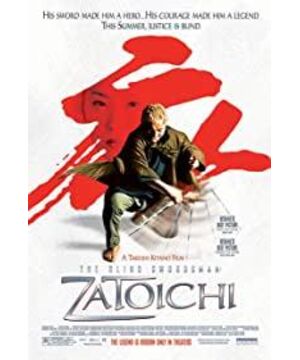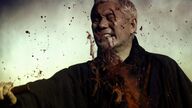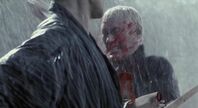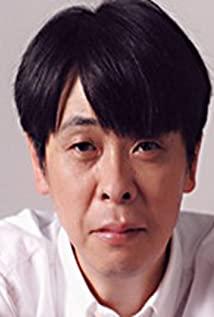Although he was once persuaded to quit by "Hanawa", he still opened up this "Zatoichi" with more violent aesthetics of Takeshi Kitano, and he could vaguely see the rivers and lakes of Takeshi Kitano between the splashes of blood. Compared with Jin Yong's swordsmen, Kitano Takeshi's Jianghu is more like Gu Long's swordsmen. The hand rises and the knife falls, the knife sees blood, there are not many cruel words, and the beginning and end of the story are mostly similar. However, unlike Gulong, the deconstruction and positioning of the characters in the rivers and lakes constructed by "Zatoichi" is more erratic, which is a combination of Bushido and anti-Bushido. Zatoichi, the protagonist, is a sloppy, blind old man who likes to gamble without paying attention to the consequences. When he sees a gambling shop out of thousands, he cuts directly, but the villain portrayed in the movie is a resolute and handsome ronin who is willing to pay for the medical expenses of his sick wife. Bet your life to be someone else's bodyguard. At the end of the movie, Ronin died, his wife committed suicide, and Zatoichi succeeded in revenge, but who represented justice? Hard to decide. Another scene in the movie that deconstructs and tortures the spirit of Bushido appears when Ronin seeks revenge for those who have humiliated him in the past. Ronin, with the spirit of Bushido who has vengeance and vengeance, stood in front of his sickly enemy and kept saying that he wanted to kill him to regain his dignity, but he was forced to say "I never had a sword, what's the use of killing me?" To be speechless. In the end, he chose to cut the wooden stick that had beaten him in half with a knife, and told his wife that it was no longer meaningful to kill him. But is it really so? Not really. Kitano Takeshi's deconstruction of rivers and lakes is also reflected in many details. The idealized heroism is projected onto the fantasy of the next-door leader who becomes the stupid son of a samurai, and there are three children dancing guns and sticks at the scarecrow with the head of the villain, but the reality is that the peasants are struggling to survive under the oppression of the gang. The irony set off in the humor is even more penetrating, and it really has the taste of "Don Quixote". In addition, aside from the plot, Takeshi Kitano's control of the slow rhythm in this film can be said to be flawless. The classic Kitano-style humor, the Japanese folk customs of the Edo period, and the slightly bloody shopping plot are perfectly integrated in this film. The remake of "Zatoichi" can be regarded as Kitano Takeshi fulfilling his childhood dream. He became a peerless master and had a good time in his movie. In addition, only Takeshi Kitano would be so capricious to be able to take out the last ten minutes of the movie and dance a happy ending with a Japanese tap dance for all members.
View more about The Blind Swordsman: Zatoichi reviews









